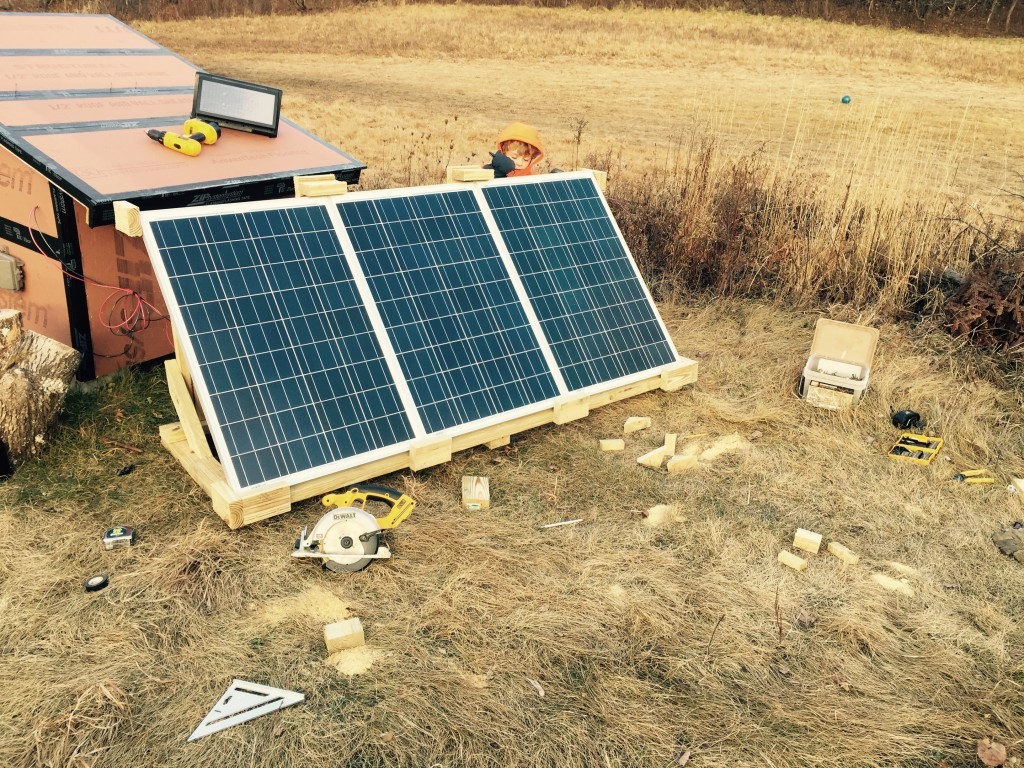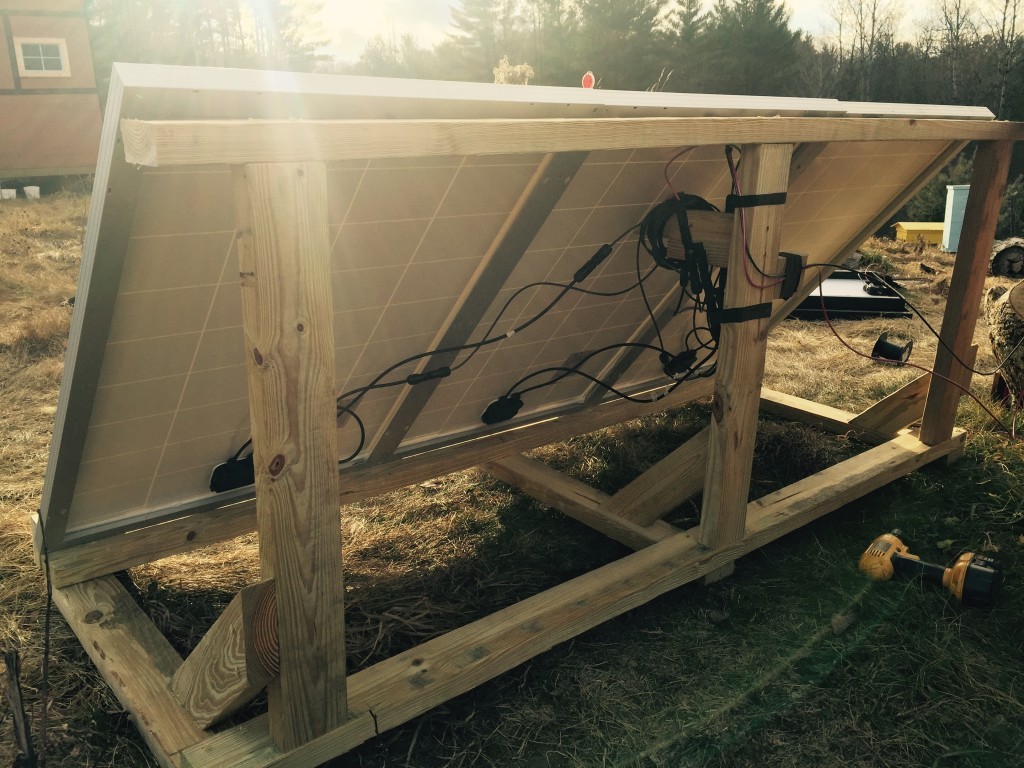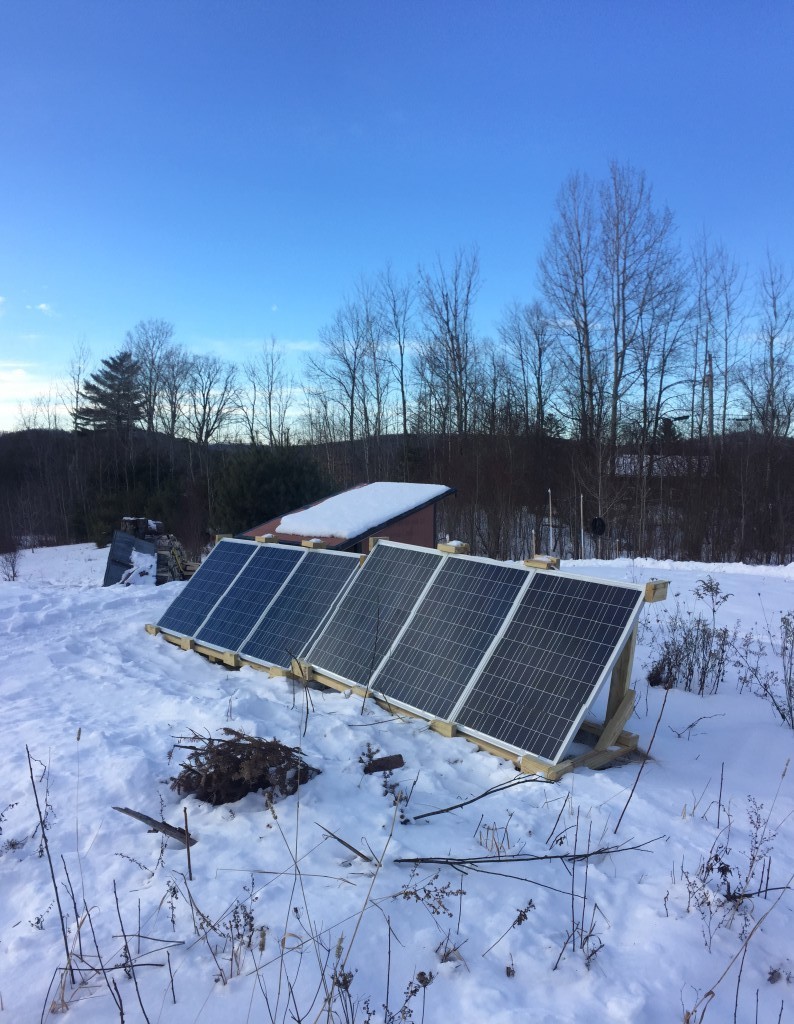We just upgraded our batteries from 3 * 35Ah lead acid (right) to 3 * 155Ah deep cycle AGM (left). The difference is like night and day; pun very much intended. These bears weight 90 lb each. We added lights in the house and are able to make it through several overcast days without loosing power. I still need to wire in another charge controller and clean up the mess of wires in the solar shed. The old system will get re-purposed for raspberry pi instrumentation around the homestead.
Doubled Solar capacity
Solar Upgrade
The past few weeks have made it clear that out 2 solar panels weren’t enough at all for the Winter months. Short and overcast days weren’t enough to keep the battery charged with even very minimal use and we went dark a couple of days. I don’t have numbers yet but these 3 panels should do a lot better than the 2 I had. I also doubled the batteries’ amp-hours to have more buffer.


